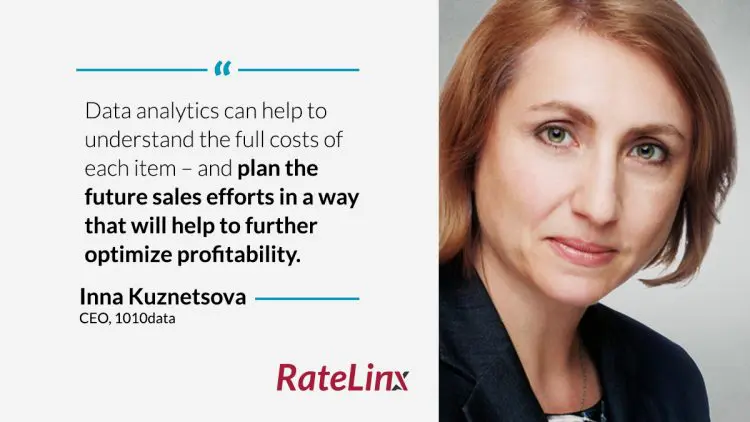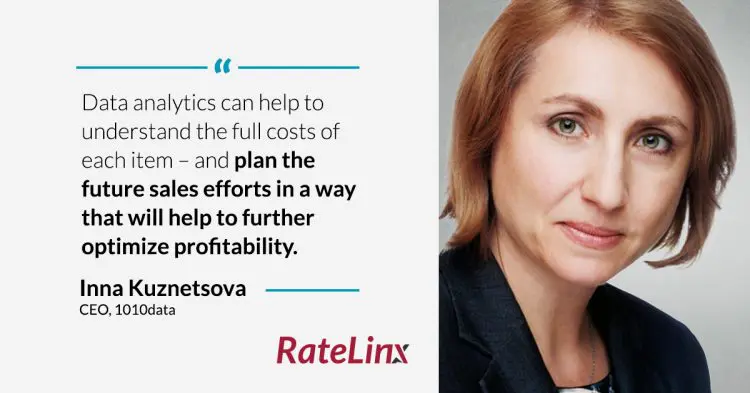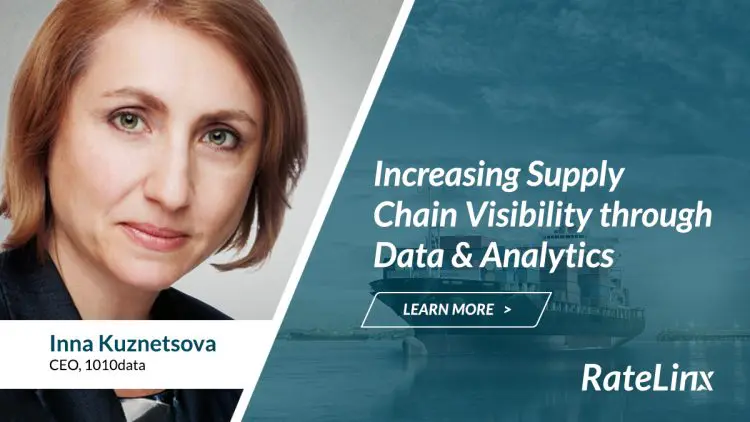The origin of the phrase “I’m waiting for my ship to come in” shows just how good modern shippers have it in terms of supply chain visibility.
In the days before telephones, telegrams, or even radio, merchants in Europe would buy shares in goods that were shipped from the Americas or the Orient.
You would pay upfront and then wait. For months at a time. Without so much as a weekly email check-in. If your ship came in, your fortune was made. If it sank or was plundered by pirates, it could take the better part of a year for you to get the news.
Thankfully, the modern supply chain is far more transparent. And it’s evolving to become even more data-rich and data-driven. Thanks to IoT devices, we don’t even rely on people to report where any package is at any given time. The goods themselves can do the reporting. Now you can say, “I’m waiting for my ship to come in. It will arrive in three hours, and here’s all the merchandise that’s on it. Here’s how we’ll optimize inventory for the next shipment.”
Of course, all of these new capabilities rely on the effective use of data and analytics. We asked 1010data CEO, Inna Kuznetsova, how you can use data to increase visibility and efficiency across your supply chain. Here’s what she said.
Featured Expert

Inna Kuznetsova, Ph. D.
From her roots at IBM to serving as CEO of 1010data, Inna Kuznetsova is an expert in all things concerning the digitization and interpretation of freight data. She’s a voice for innovation concerning artificial intelligence, machine learning, cloud logistics and more.
Improving Supply Chain Visibility & Efficiency through Data & Analytics
Smart data analysis can help companies keep better track of their goods throughout the supply chain. This analysis can help optimize the process from manufacture all the way through sales.
“Data analytics can help to understand the full costs of each item, including shipping charges and its profitability – and plan the future sales efforts in a way that will help to further optimize profitability,” Inna says. “For example, retail and consumer packaged goods (CPG) customers running promotions can get the analysis of their impact in a granular way. As a result, they increase the amount of goods shipped to stores where the promotion was successful while avoiding excessive inventory in others.”
Start by Developing Data Skillsets
Data mastery doesn’t start with investing in a technology solution. “In most of the cases, building and empowering a data analytics department is the right first step,” Inna says. “Bringing in people with data analytics experience to lead the process helps greatly to understand the possibilities as well as select the appropriate tasks and requirements across the business.”
Granted, each organization has its own level of technology adoption already. Some have data scientists on staff and are already doing complex data analysis daily. Others are just starting their journey. “It’s important for every company to define what their strategy should be as it applies to data: How they treat it, whether they want to monetize it, and what various insights business units need to improve their results,” Inna says.
“Customers talk about the need for transparency, but award bids based on costs and quality of delivery.”
First, you take stock of your current level of data sophistication and layout a strategy. Then explore whether to develop your analytics platform in-house or to partner with a vendor.
Inna advises: “If the company does not see software as their primary business, starting their own platform development internally may be costly, long-term and unpredictable. Instead, understanding the market landscape and partnering with a service provider who has a proven track in rolling out such platforms fast is a safer option.”
Share Data across the Organization and with Providers
To truly make the best use of data, it needs to be shared throughout the supply chain. Data democratization can be challenging, but it’s a necessary step.
“Sharing data requires an experienced provider who understands the business and can be a trusted partner both in ad hoc analysis and regular reporting with the necessary level of granularity – down to the singular store or even point-of-sale (PoS) level,” Inna says.
But it’s not just about working with trusted providers. You also need an internal “culture of data-driven decisions on replenishment, planograms (product allocation within the store), and merchandising.”
Like what you’re reading?
When companies get data-sharing right, the results can be striking. Inna highlights Dollar General’s practice of sharing data with suppliers, including stock-in rates, category performance, even sales, and promotion results.
“Leveraging this data, the supplier can avoid fines for stock-outs in large chains and consistently improve the SKU mix for every store,” Inna says. What’s more, “the retailer can maximize profitability for every location, improve the space allocation and basket sizes.”
Inna cites another retail customer, a pharmacy chain, that used shared data to analyze the most frequent combination of products in a shopping basket. “As a result, they moved pain medication next to the knee support products and experienced an over 20% increase in sales,” she says.,
Define What Type of Visibility Is Valuable (And Invest Accordingly)
The term “visibility” as it applies to the supply chain, can have multiple definitions. “A carrier may send you the track & trace signals for each shipping order,” Inna says. “So you will know, often post-factum, if a container left the terminal. But is that useful?”
For modern customers, a more valuable form of visibility is receiving alerts that lead to actionable insights that mitigate risks and increase efficiencies. According to Inna, the lack of willingness to invest in that type of visibility is holding companies back. “Customers talk about the need for transparency,” she says, “but award bids based on costs and quality of delivery.”
As such, it’s important to integrate your required level of visibility into your annual bid requirements, she says. Additionally, it’s also important to hold providers accountable for the visibility they’ve promised.
Set Productive Goals and KPIs to Define Success
It’s tempting to simply measure adoption rates as the KPI for your analytics investment. However, as Inna points out, “The use of data analytics is not a goal of its own. It is a tool to be used for solving business problems.”
According to Inna, you should set KPIs that tie directly to business outcomes. “One of the frequent problems stems from setting KPIs for parts of the logistics chain, rather than the impact on the end results,” she says.
For example, “If a shipping manager is measured on goods being in the warehouse by a certain date, he or she may expedite unnecessarily to compensate for a delay. Yet, you might still have two weeks of inventory to carry you through without the additional shipping costs,” Inna says. A better approach is to set KPIs based on business impacts, such as avoiding empty shelves or production stoppages. Then invest in data sharing and analysis that focuses on the bottom line.
Don’t Wait for Your Ship to Come In
In the early days of freight shipping, merchants relied heavily on patience and luck. A modern supply chain is about minimizing waiting, eliminating uncertainty, and ultimately increasing reliability and profitability. Smart data analysis that serves strategic goals based on business outcomes is a crucial part of modernizing your supply chain strategy.
Learn how to transform visibility into a strategic asset.
3 Facts Your Track and Trace, Real-Time Visibility Platform Is Not Telling You
Despite being around for decades, technology has proliferated track and trace solutions in recent years. But how can you leverage your visibility to inform your logistics strategy, reduce costs and increase optimization?








